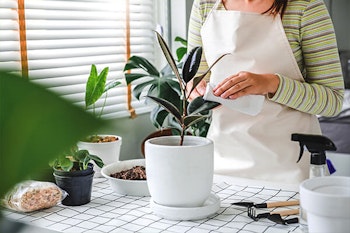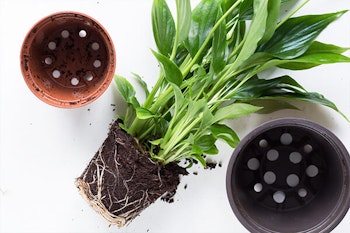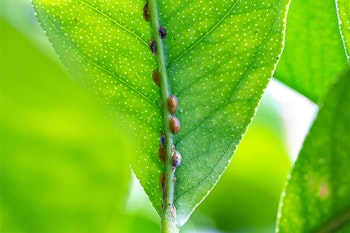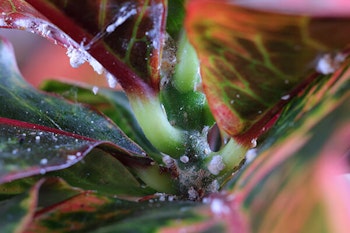 Be Inspired Blog - Arizona
Be Inspired Blog - Arizona

How to Rejuvenate Tired-Looking Houseplants
Have your houseplants seen better days? Fear not, many houseplants can be brought back from the dead with just a little bit of tender loving care. If you’re wondering how to revive a plant that looks dry, dying, or dead, read our guide for some helpful hints. Don’t give up hope!

Wipe Down the Leaves
Sometimes plants just need a bit of a bubble bath moment in order to start living their best lives again. Dust and dirt can collect on the leaves and a simple wash with warm water and plant-friendly soap can do the trick. While wiping down your plant leaves can seem a bit time-consuming, it can also be a therapeutic process for both you and the plant. Wiping the leaves of your plant may also revive it by removing some kinds of typical houseplant pests. It’s a win-win for everyone.
Water it Properly
Making sure your plant is getting proper moisture is one way to revive it. We’re not here to judge ––everyone has at least one plant horror story when they realize they weren’t watering it according to the plant’s needs. Double-check the unique watering needs of your poor dried plant. A good rule of thumb for watering is to water less frequently but more thoroughly. Slowly water your plant until the water runs through the drainage holes in your pot. This will ensure that the roots are getting the moisture they need. Keep in mind that not all pottery is created equally: clay/terracotta pots can help regulate moisture more than plastic or other materials.

Repot your Plant
A sad, dying plant may need to find a new home. If the pot is bulging at the sides or roots are coming down through the drainage holes, it’s time for the plant to move on up to a new penthouse suite. Size up a few inches to give your plant a new pot with the space it needs to grow. You might also need to repot the plant if it’s in poor-quality soil. Different types of plants need special soils that have the nutrients and texture it needs to thrive. All-purpose soil should have plenty of perlite, vermiculite, or sharp sand.
When repotting, be gentle with the plant, particularly its root system. Gently shake or wash off dirt and debris from the roots, add a little soil to the bottom of the new pot, add the plant, and fill in with the remaining soil. The soil will settle over time, so don’t underfill the pot too much. Water the plant thoroughly. With any luck, you’ll be able to revive your plant in its new home.
Check for Pests
Pests are one reason why your plant may be looking dried out, tired, or even nearly-dead! Many houseplants can be revived once you identify and treat the pest. Some of the most common damaging houseplant pests are:

Scale - Appears as a brown crust along the stem of your plants. It’s unlikely to spread to other plants as scale is immobile. You can likely get scale under control by treating it with insecticidal soap and manual removal with your hands.
Spider Mites - Spider mites are hard to spot, and you’ll likely notice their damage or webbing before the bugs themselves. They can be highly damaging, and a severe infestation will lead to some very dead, unrevivable plants. Keep your plants in a humid environment whenever possible. Isolate plants you suspect may have mites.

Mealybugs - These are little white bugs that can hitch a ride between plants. You can cancel out these buggers by releasing beneficial insects (green lacewing or mealybug destroyer, which is a very cool name), or you can do a spot treatment with a Q-tip dipped in isopropyl alcohol.
Aphids - These highly-squishable pests aren’t usually a common houseplant pest, but they can be. They leave behind a sticky residue on your leaves that can attract even more pests. If they are getting out of control, you may want to take your plant outside and gently take a hose to it to help shake off the infestation. Be careful you don’t damage the plant with water pressure that’s too strong.
Fertilize
Finally, your plant may need a little boost in its diet! Fertilizing your plants should be a part of your plant-care routine. Using an all-purpose slow-release fertilizer should do the trick for most houseplants. Mark your calendar when you fertilize and follow-up as per each plant’s recommendation. Fertilizing your plants is a great way to revive them and give them the essential nutrients they need to thrive.
Sometimes houseplants just need a bit of intervention to get back to their usual thriving selves. Work through this checklist and try to revive your houseplants! If you’re looking to find out more about what plants are trending in Arizona, come visit us! We’d love to help you troubleshoot plant issues and help you cultivate your houseplant passions.

